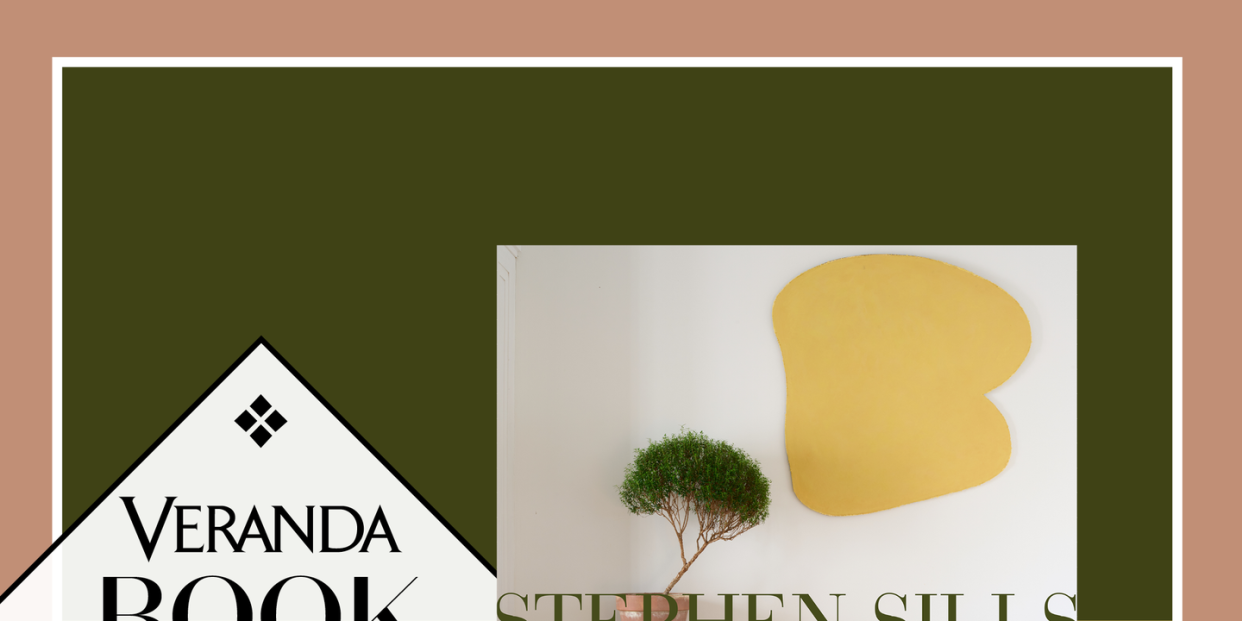Our October Sip and Read Club Pick Is 'Stephen Sills: A Vision for Design'

"Hearst Magazines and Yahoo may earn commission or revenue on some items through these links."
Welcome to the VERANDA Sip & Read Book Club! Each month, we dive into a new book and offer exclusive conversations with the author, along with a perfectly matched cocktail. This month's pick is Stephen Sills: A Vision for Design, written by interior designer David Netto. Get caught up on our past book club selections here.
When speaking about living design icons, no list is complete without the mention of Stephen Sills. The American design leader established a signature style that marries contemporary luxury and collected calmness. He's letting design lovers into the thought process behind his acclaimed projects in his latest book, Stephen Sills: A Vision for Design. However, unlike the books that came before, Sills proclaims this third monograph, written by fellow designer David Netto, is a teaching book giving readers an in-depth look at his design ethos and lessons on art and architecture. Here, Sills and Netto open up on what the writing process was like for A Vision for Design and their thoughts on the current design industry.
When Stephen came to you with the idea for a third book, what were your first thoughts?
David Netto: My thoughts were, this is the first book I’ve been really excited about doing since Francois Catroux. Stephen is important; the best America has going on right now, and probably of his generation. Who doesn’t want to help tell that story?
Stephen, what was it like working with David on this book?
Stephen Sills: It was an absolute dream. Him being such a good friend; His intelligence; his vast historical knowledge of décor; his enormous talent as a decorator and writer–can’t imagine having worked with anyone else.
In the introduction, David is very quick to say that you requested this book to be a "teaching book." What did you mean by that?
SS: Teaching to me is not “lecturing”. I just wanted a book explaining my point of view on décor and my process–how I approach projects. I saw it as a chance to reveal some of my basic secrets in approaching art, architecture, and interior design.
David, what was the writing process like?
DN: It was a pleasure, but complicated. He said he wanted this to be a teaching book, and I knew that meant we had to have a non-linear narrative. The two Q&A chapters, between him and Martha Stewart on gardens and him and myself on craft, were the first thoughts I had about delivering that. They read like studio visits, invite you in, and make you feel like you are participating in a conversation. The other part, which was harder, was that as I was writing I realized I wanted the text to be in his voice. So I rewrote all our interviews in the first person, as though he was writing that himself. It’s effective and intimate—but it took a bit of work!
Stephen, you predict there will be a return to a more personal and intimate decorating style. What does that look like?
SS: I anticipate a return to a more personal vision of the person that lives there–not a cookie cutter mentality where everyone copies the current trend which is what is currently happening in decorating. Trends should be gone and individuality should reign!
Architecture plays a big role in how you decorate. How does one start “listening to their house?”
SS: It’s listening with your eyes—what are your eyes seeing? It’s having a vision and understanding where you are when you’re creating a space for yourself or another individual being aware of all the different factors and making sure they are appropriate for yourself or your client.
What is it about Stephen's work that makes it feel so contemporary yet timeless?
DN: Three thoughts on that. His work is always site-specific, based on a reaction to architecture or the personality of a client. So he doesn’t repeat, which means no formula and therefore always fresh ideas. What he also loves to do is find a way to make anything bohemian—to speak that Twombly language, which makes anything, however grand, look artistic. Lastly, there is his palette. Stephen is a very bold colorist, and this makes anything feel modern and original. Even when it’s mainly white.
Stephen, what's one lesson you hope people take away after reading this book?
SS: I hope the lesson is for one to really take a deep dive into your psyche to be completely aware of the space that you are creating and the outcome that you want to project.
David, what's one lesson you've learned from Stephen that you use in your own work?
DN: Don’t be afraid of the past. Use antiques to make the rest look even more modern. Put a little yellow anywhere, it makes anything feel happy (I noticed that many years ago in Vera Wang’s apartment). Don’t ever talk down to a client—take the time to explain to someone what you want to do for them with real care, and chances are they’ll give you that "yes" you’re looking for. That’s three, but what the hell.
You Might Also Like

